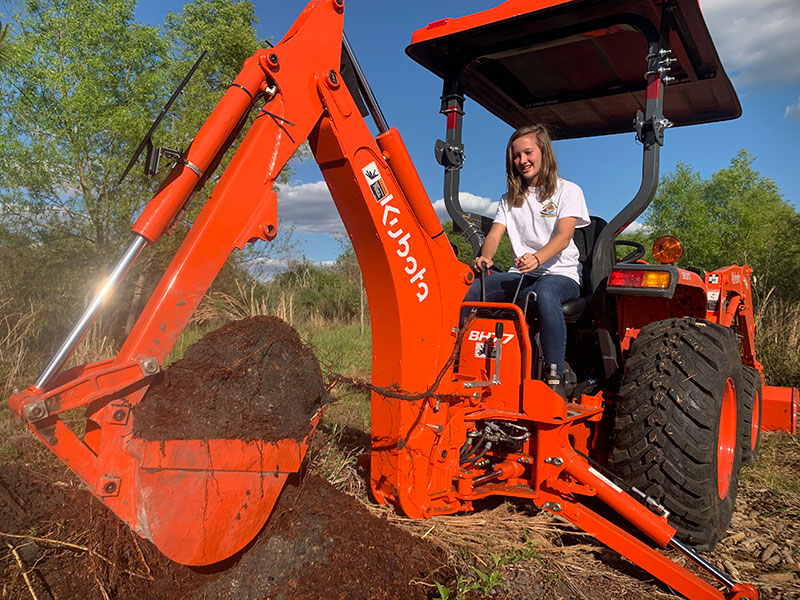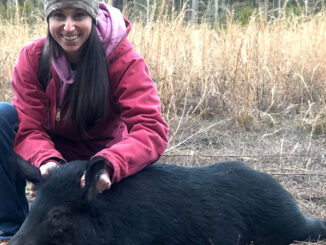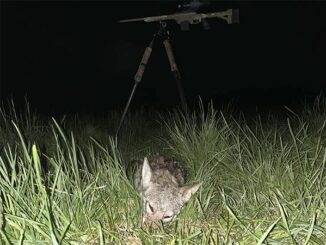
Every hunter dreams of owning and managing their own piece of dirt. And being able to bag a trophy buck, limit of puddle ducks, or a long-bearded turkey on the land can be a quite satisfying end result for the owner/hunter of a hunting property. But owning a hunting property takes a lot of work from not only financial investments, but from a plethora of sweat equity as well. Having the right equipment will make all the difference in the world.
Let’s face it, in order to really get much done on a hunting property, something with four wheels powered by unleaded gasoline or diesel is required. For most hunters, an ATV and UTV is in the garage or shed and can be great tools for transporting small amounts of gear into and out of the woods, or for putting out bait piles deep in the woods. With the proper attachments, they can be used to deploy herbicides along field edges, roads, ditch banks, and of course in food plots. And with a front or rear-mounted spreader, ATV and UTV’s can be great additions on the property to distribute seed, fertilizer, and lime to create a solid food source for all the feathered and furred game. But the ATV and UTV attachments can only help a landowner and hunter so far.
Landowners really need a farm tractor of some sort in order to do the heavy lifting. The tractor doesn’t have to be a 100+hp beast capable of tilling up 3,000 acres of cropland. But sufficient power is needed in order to take care of basic and some advanced duties around the farm.
So, what size tractor is necessary anyway? Tractors come in all shapes and sizes. They typically are sized according to horsepower where the larger the tractor, the higher the horsepower. Knowing which size tractor and what horsepower is needed will be dependent on the size of the tract or the level of work that is needed.
Bigger isn’t always better either. Surely a 60-horsepower tractor can tackle some of the toughest jobs, but it also has its limitations, especially for hunters and landowners that want to create and maintain food plots in confinement or the wooded sections of the property. A smaller, more compact tractor can slip into smaller places when a larger machine just can’t fit. And in today’s market, compact tractors make up one of the largest components of the tractor industry. Compact tractors come in different flavors, including John Deere, Kubota, Mahindra, Kyoti, and Bobcat to name a few.
Compact tractors may only be 25 -60 horsepower and are equipped to handle most of the duties around the farm. Tractors also come in subcompact versions with 18-24 horsepower, but they are often just a little too underpowered in order to lift heavy payloads, or to generate enough torque through the PTO system to thrash through heavy brush or to cut into tough, compacted soils. But on some farms, the subcompact varieties are more than enough to handle light tasks, including mowing and basic duties on the farm.
Basically, the size of the farm and the level of use will determine what size tractor is needed. A compact tractor in the 30-40 horsepower range can handle about any of the demanding tasks typical of most hobby farmers on 50- to 200-acre farms where cutting down brush, moving fallen trees, and maintaining roads and food plots is the primary use.
Beyond tractors, choosing the right implements to go with the tractor is just as important as the tractor itself. Surely, landowners can find use out of every implement made on the face of the Earth to drill holes, dig holes, mow fields, and stack hay bales. Basically, every landowner will get use out of certain implements based on their needs on their land. But for a landowner/hunter, certain must-have implements shouldn’t be avoided.

The most important tractor implement is the cutter that can be used to mow roads, trails, fields, and basically maintain passageways and fields. The cutter, a/k/a bush hog, is by far the most important tractor implement.
The second most important implement is the disk harrow. Essentially, the disk can be used to level out roads, prepare food plots, maintain fire breaks, etc. Roads can also be leveled out with a box blade that also ranks high among the must-have equipment. Box blades can move a substantial amount of dirt to dig trenches and level out roads.
One of the most important implements to have beyond these previously mentioned implements is the front-end loader. This much-needed device can be used to push and lift fallen trees and dozens of other tasks.
Next, a spreader and sprayer are both necessary to prepare/maintain food plots and to deploy herbicides and liquid fertilizers. It would be difficult to maintain food plots without a method of spreading fertilizer, lime, seed, and herbicides.
Beyond these implements, landowners can get usage out of a huge assortment of other implements from the rear backhoe, finishing mower or belly mower, post-hole digger, side cutters, rotary tiller, chain drag harrow, grapple, forks, subsoiler, chisel plow, cultipacker, etc. Every hobby farmer and landowner with an interest in working the land can get use out of all of these tractor attachments, but they can also be purchased as the needs arise versus all at the same time.
Tractors and their implements are important to maintain properties. And while every implement under the rainbow isn’t necessary, it surely can make duties around the land simpler and more efficient. Most landowners purchase tractors for a few intended uses, but most of the time, they quickly realize the tractors can assist them in many other ways as well.





Be the first to comment